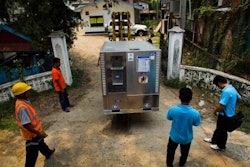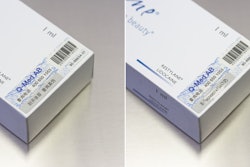
It is imperative that steps be taken in the near future to improve efficiencies and attempt to cut costs in the pharmaceutical supply chain. Here are 10 ways this could be done:
1. Cut out the middle man (wholesaler.) This will do three things:
• Speed up the distribution process as the company will be delivering directly to the customer.
• Cut costs by cutting out the middle man.
• Sell more product: with better prices the companies will be more competitive and outsell competitors.
2. Improvements in tracking product, which will cut down counterfeits and competitors copying product. This will help the pharmaceutical companies to stay ahead of the competition and be more efficient.
3. Improve technology in the manufacturing process. This will help:
• The products to be created quickly and efficiently.
• Better technology will help product cost to be reduced and sold at a more competitive price. This will ensure dominance over competitors.
• Upgrade manufacturing equipment and processes to make manufacturing product more efficient.
4. Shift manufacturing outsourcing to new markets like India and China. This will cut costs as labor is cheaper here and products can be made more cost effectively. When this is done it will allow pharmaceutical companies to be more competitive and cut costs in the manufacturing of their products.
5. Quality control will be increased. This will ensure better quality products. Sales will increase with improved quality. There will be less wastage from substandard product that cannot be sold. When proper analysis of the quality of a product is done it can save disastrous recalls that hurt the company and can cost a substantial amount of money. With the pharmaceutical industry there is little room for mistakes and substandard product as peoples’ lives can be at risk. Additionally, the industry is highly competitive and sub-quality product can mean that contracts will move to competitors.
6. Analyzing how money is being spent and where it is going is a factor. In order to cut costs an initial financial analysis must be done. It will then be possible to know where to cut costs and how to make budgeting better.
7. Cutting costs in areas where there is wastage and money is not being used efficiently. There are always areas in any company that are not working as efficiently as they could. Too much money can be squandered in places where less investment would be equally effective.
8.Supply chain analytics should be done. What do we mean by this term? It is when a company scrutinizes the supply chain process. They can assess which areas need to be improved and made more efficient. The supply chain is complex. Management deals with several suppliers and works on a global basis. This makes supply chain analytics challenging. Questions need to be asked in order to analyze the supply chain correctly:
• Examine which suppliers are the best and most efficient: some suppliers are better than others. The more efficient the suppliers are the better the supply chain will work.
• Different factors can affect the supply chain. The impact of various elements like weather or the rise and fall of fuel prices on the delivery system will affect cost of supply.
• How much inventory to keep for certain products. This involves accurate analysis of supply and demand. Overstocking can cause wastage and force companies to lower prices to get rid of old stock in order to prevent heavy losses. Understocking can incur losses as the company will need to back order and sometimes need to compensate the customer for waiting. Worse scenario is that customers can go to competitors to get their order done on time, rather than wait for the back order.
9. Once supply chain analytics have been conducted the pharmaceutical company can then apply the necessary changes needed to increase efficiency and cut costs in the supply chain.
10. Examining the purchasing team in the company. The company must ensure that they are getting product of high quality but at the same time not spending too much on product from the suppliers. This may mean that they need to change suppliers to get better prices but still maintain quality. It is important to get detailed data from the purchasing section of the company to make the process more efficient and cost-effective.
—Edited from an article supplied by Cold Chain IQ


























